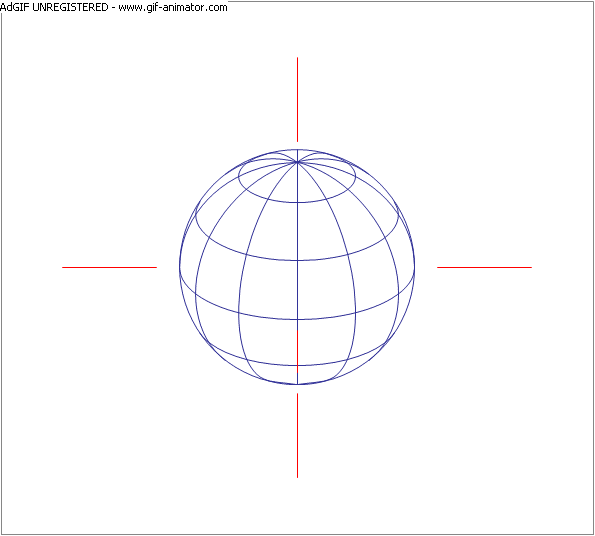High Noon
 On a specific day, Earth's axis of rotation is along the unit vector which has spherical coordinates
On a specific day, Earth's axis of rotation is along the unit vector which has spherical coordinates
with respect to a frame centered at the center of Earth, and with its z-axis perpendicular to the orbital plane of Earth around the Sun, and with its x-axis passing through the center of the Sun.
With respect to a point on Earth that has a latitude of North, what is the maximum angle of elevation of the Sun above the horizon ? (In degrees, correct to two decimal places)
The answer is 76.34.
This section requires Javascript.
You are seeing this because something didn't load right. We suggest you, (a) try
refreshing the page, (b) enabling javascript if it is disabled on your browser and,
finally, (c)
loading the
non-javascript version of this page
. We're sorry about the hassle.
We have two coordinate reference frames to relate, the first one is the reference frame that has its center at the center of Earth, with the z-axis set perpendicular to the orbital plane (the plane in which the Earth orbits the Sun). Also, the x-axis is selected to point towards the center of the Sun. The second reference frame is attached to Earth, centered at the Earth center, with its z-axis along the axis of rotation. The x-axis orientation, results naturally when we look at the second frame as being the result of two consecutive rotations (as the animation depicts), the first is about the z-axis (of the orbital plane). And the second is about the y-axis of the frame resulting from the first rotation.
Thus, let r 0 = [ x 0 , y 0 , z 0 ] T be the coordinate vector in the orbital plane, and r 1 = [ x 1 , y 1 , z 1 ] T be the corresponding coordinate vector in the frame resulting from the first rotation, and let r 2 = [ x 2 , y 2 , z 2 ] T be the corresponding coordinate vector in the final frame (the one attached to Earth, with its z-axis along Earth's axis of rotation).
We can relate these three vectors as follows
r 0 = R 1 r 1
where R 1 is the rotation matrix about the z-axis by an angle ϕ , and is given by
R 1 = ⎣ ⎡ cos ϕ s i n ϕ 0 − sin ϕ cos ϕ 0 0 0 1 ⎦ ⎤
In addition,
r 1 = R 2 r 2
where R 2 is the rotation matrix about the y-axis by an angle θ , and is given by
R 2 = ⎣ ⎡ cos θ 0 − sin θ 0 1 0 sin θ 0 cos θ ⎦ ⎤
Hence,
r 0 = R 1 R 2 r 2 = R o r 2
where
R o = R 1 R 2 = ⎣ ⎡ cos ϕ cos θ sin ϕ cos θ − sin θ − sin ϕ cos ϕ 0 cos ϕ sin θ − sin ϕ sin θ cos θ ⎦ ⎤
Now, the unit normal vector to the surface of Earth a at point that has a latitude of 3 0 ∘ is along the position vector of the point itself and is given by
v 2 = r 2 = [ sin θ L cos ϕ t , sin θ L s i n ϕ t , cos θ L ] T
where θ L = 6 0 ∘ and ϕ t is the rotation angle counterclockwise from the x-axis of the Earth reference frame. In the orbital reference frame, this same vector has the coordinates
v 0 = R o v 2
And, in the orbital reference frame, the Sun rays are pointing in the negative x-direction, so with respect to our point on Earth, the direction of the Sun is in the positive x-direction, Therefore, the angle between the normal to the surface of Earth and the direction of the Sun is given by
θ N = cos − 1 ( v 0 ⋅ i ^ ) = cos − 1 ( v 0 x )
where v 0 x is the x-coordinate of v 0 . Using the above expressions for v 2 and R o , this is given by:
v 0 x = cos ϕ cos θ sin θ L cos ϕ t − sin ϕ sin θ L s i n ϕ t + cos ϕ sin θ cos θ L
= a cos ϕ t + b sin ϕ t + c
with
a = cos ϕ cos θ sin θ L
b = − sin ϕ sin θ L
c = cos ϕ sin θ cos θ L
which is a sinusoid in ϕ t . Since we are seeking the maximum elevation angle above the horizon, then we are seeking the minimum θ N . This occurs when θ N has the highest cosine value, which is v 0 x . The maximum of the expression for v 0 x is given by
v 0 x , M A X = a 2 + b 2 + c
Substituting the given values for θ , ϕ , and θ L gives the maximum value of the cosine of θ N as
v 0 x , M A X = 0 . 9 7 1 7
Therefore, the (minimum) value of θ N is
θ N = 1 3 . 6 6 3
Hence, the maximum angle of elevation of the Sun is
θ E = 9 0 ∘ − 1 3 . 6 6 3 ∘ = 7 6 . 3 4 ∘